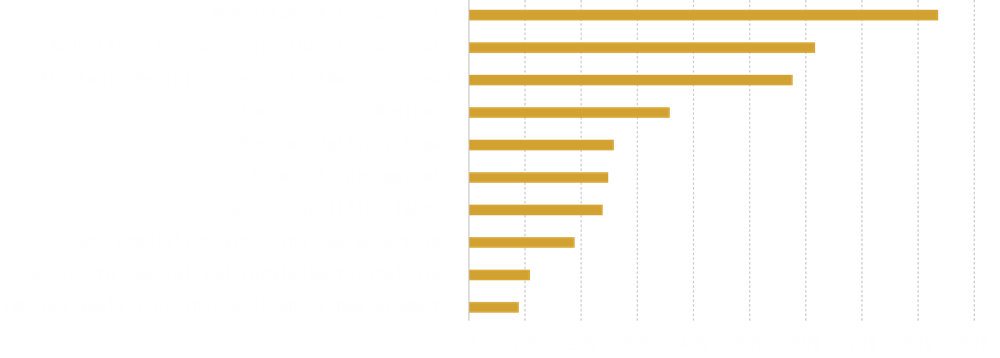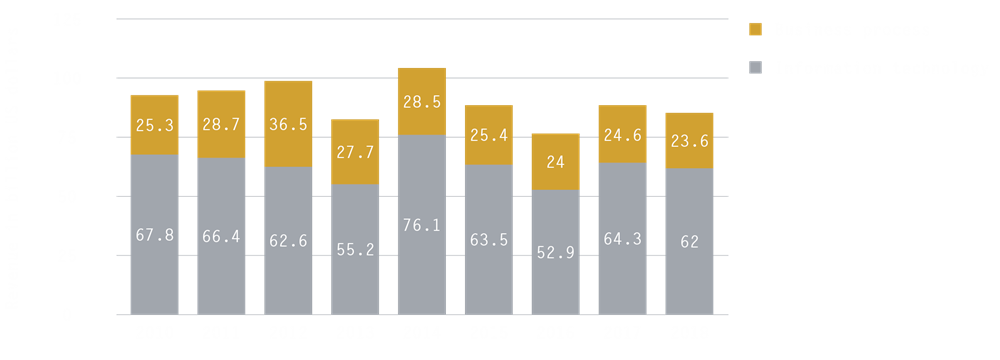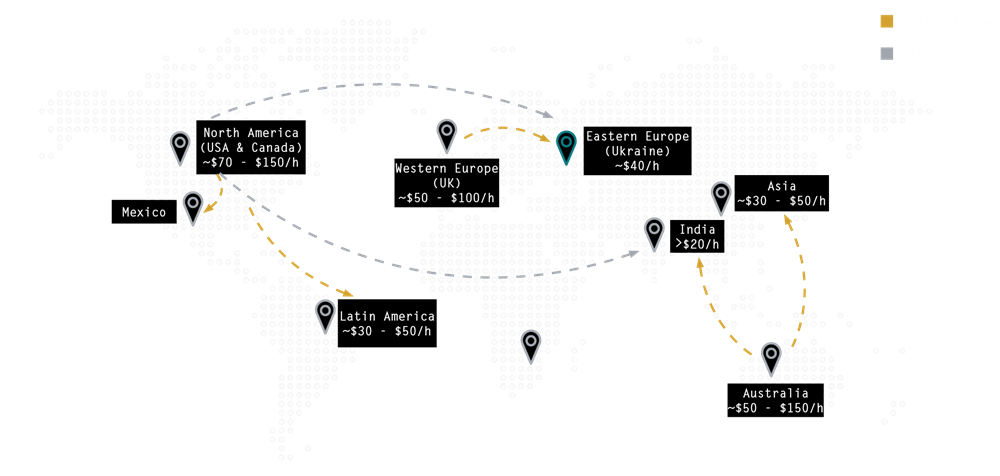Having previously discussed the advantages and disadvantages of onsite and remote work in detail, this blog now turns to nearshoring as an international sourcing model. As in parts 1 and 2 of this blog series on choosing the right post-COVID working model, we weigh up the key benefits and challenges of nearshore outsourcing.
The practice of locating services and people in a country or countries closely neighbouring your own offers several benefits today.
Benefits
- Lowering the cost of certain services. This is a key reason why nearshore outsourcing became popular initially. Delegating a range of tasks to specialists in a nearby country with lower labour costs can significantly reduce a firm’s expenses.
- Hiring talent at a competitive price. Nearshoring countries can offer specialists with a higher education level and at least several years of experience in the related field, but who are less expensive than employees in the home location.
- Time-zones are closely aligned. Nearshore outsourcing allows you to operate across locations within the same or similar time-zones. This has benefits in terms of communication, working hours and travel times.
- Fewer cultural and language barriers. When nearshoring to the closest country to your own, there will be fewer concerns around cultural alignment, and language differences may be less of an issue.
- Greater legal and regulatory alignment. Nearshore outsourcing within a bloc like the European Union, for instance, means firms can take advantage of a greater harmonization of laws and regulations.
- Entering a new market. Nearshoring can also be a first step to entering and competing locally within a foreign market.
Challenges
In addition to the benefits that nearshore outsourcing offers, there are also some challenges to consider.
- Higher costs than offshoring. Although nearshoring may be less expensive than conducting business and software development operations in-house, it is usually not cheaper than offshoring to countries located further away.
- Lack of trust and perceived lower quality of work output. Some business owners are reluctant to trust lower-cost companies in neighbouring countries on the basis that the quality of their work and delivery may also be lower.
- Confidential information and sharing of sensitive data. A nearshoring relationship will typically require the exchange of confidential information when delegating business processes. Companies that do not wish to share such confidential information may accordingly reject outsourcing; those firms working with sensitive client data will want to be even more cautious, as the sharing of such client data with entities – particularly those located outside the home market – may not be permitted.
- A fractured team spirit. Everyday interactions - small talk, coffee breaks, game nights or seasonal festivities – play a key role in fostering team unity, engagement and loyalty. If roles within a function are split across teams in different countries, these values may be harder to achieve or undermined.
- Project suitability. Some business functions and activities lend themselves better to outsourcing than others. IT development or testing are usually suitable functions for nearshoring, for instance. However, creative tasks which require closer engagement and interaction with customers or stakeholders may prove more difficult to be outsourced.
- Compromised communications and delivery. Communication in-house will typically be easier and faster than with an outsourcing partner located in a different country. It may prove more challenging to sync-up project work and deadlines as a result.
Outsourcing/nearshoring: current situation by the numbers
Figure 1 illustrates why companies are choosing the nearshore outsourcing model.

Figure 1: Motivation factors for international sourcing activities (2014-2017)
Source: Eurostat, SBS
Outsourcing has been popular across many industries for decades. The most popular reason for outsourcing is cost-cutting. According to the European Commission's latest International Sourcing (IS) study1, which gathered data from nearly 60,000 companies in 16 European countries for the period between 2014 and 2017, reducing labour costs is the most popular reason for outsourcing, followed by the reduction of other costs and strategic decisions taken by the group head.
Interestingly, almost 40 percent of respondents said outsourcing meant they could put more focus on their core business, while a quarter outsourced specifically to access new markets or due to the lack of qualified labour. Fewer regulations abroad, access to specialized knowledge, improved quality or introduction of new products are less important for outsourcing activities. This data shows that by outsourcing, businesses are rewarded with extra time and greater staff support, which allows them to scale, remain competitive, and (potentially) improve their services and offerings.
Many financial services companies report a positive experience from their outsourcing relationships. Overall, nearshoring has become a very popular outsourcing strategy, as the recent development of the global nearshoring market in business process and information technology also confirms.

Figure 2: The changes in global nearshoring market (2010-2018)
Source: Statista
As mentioned before, companies appreciate the possibility to arrange quick business travel, often without the need for visas or work permits. They enjoy the fact that there is no difference in time-zones and smaller gaps in cultural habits while the costs are still lower than those in-house. Companies usually engage geographically close countries, so typically the US nearshores to Mexico or South America, while Western Europe looks for options in Eastern Europe.
The following figure shows the top nearshore as well as offshore regions and their respective cost savings potential when outsourcing IT activities.

Figure 3: Top nearshore and offshore locations for outsourcing IT activities
Source: MLSDev2
Conclusion
As we have established, remote working is set to be part of the ‘new normal’ post-COVID. Nearshore working models have often been deemed unsuitable in the past, due to a perceived lack of control, trust issues or technological limitations. But in this new reality, where in-house employees themselves may be working from home more frequently or even permanently, such reservations seem outdated.
The current crisis is an opportunity for companies to re-evaluate their working models. Nearshore outsourcing offers many benefits, and, if properly scoped and implemented, a nearshoring strategy can lower costs while enhancing scalability and flexibility.
Capco’s offering includes: Supporting cost management initiatives and enhancing organizational efficiency to define the best location setup; providing hybrid, nearshore and offshore services.
Contact
Oliver Geiseler, Partner Austria, Germany & Slovakia
M +49 172 131 8328
E oliver.geiseler@capco.com
1 https://ec.europa.eu/eurostat/statistics-explained/index.php/International_sourcing_and_relocation_of_business_functions#Motivations_for_international_sourcing
2 https://mlsdev.com/blog/nearshore-software-development







